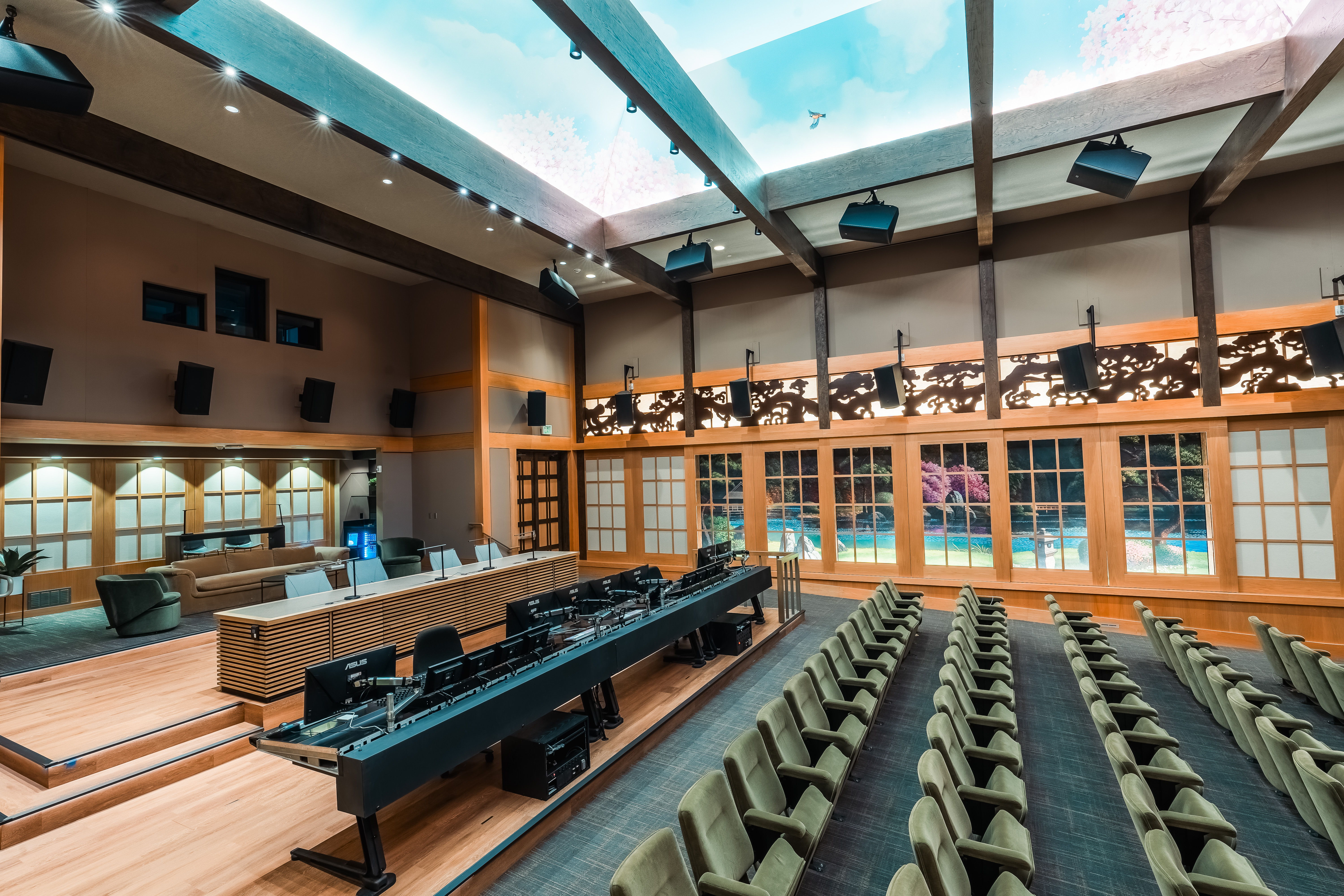Sony Pictures Post Production Services Acquires More than Four Dozen Licenses for Harrison's MPC Channel Strip Plug-in Across 14 Mix Stages
Culver City, California, October 16, 2024 — In 1992, the Sony Pictures Post Production Services sound team installed the first of many Harrison MPC film re-recording consoles, the product of a design collaboration between the manufacturer and Jeff Taylor, chief engineer at the studio’s Culver City facility, amongst others. Thirty years on, post-production workflows have evolved significantly, but Sony Pictures’ engineers continue to utilize Harrison’s powerful audio processing tools, with more than four dozen licenses for Harrison’s MPC Channel Strip software in place across 14 mix stages.

“We have a lot of mix stages here at Sony Pictures Post Production Services and cover both feature film and episodic television,” explains Mark Onks, Post Production Sound Engineer. He has been a witness to those changing workflows, having arrived at Sony Pictures Post Production Facilities 26 years ago when mag machines and analog consoles were standard. These days, the Sony lot’s stages are largely standardized on a DAW workflow, or hybrid configurations with the MPC consoles.“We are using the Harrison MPC Channel Strip plug-ins to emulate how mixers in the past have shaped and contoured their sound sources and elements with familiar tools. They are rebuilding a Harrison console in the software world.”
Onks continues, “The MPC Channel Strip plug-in primarily is used to do EQ, dynamics, de-noising, de-essing and other things with a great deal of similarity and feel as the old MPC consoles. They work the same way and the response of the filters, the equalizers and the dynamics control is similar in feel and function to the original hardware version. The consoles have been around for eons, and a lot of big movies have been made using that signal flow.” These movies include Uncharted, Bullet Train, Gran Turismo: Based on a True Story, Escape Room, The Woman King and popular franchises including Spider-Man, Bad Boys, Ghostbusters, Jumanji, Venom and many more.

Full of functionality, including advanced DSP
The MPC Channel Strip plug-in, which combines six components derived from the advanced DSP of Harrison’s MPC 5 ‘motion picture’ digital mixing console, offers a parametric eight-band EQ with RTA, a pair of multi-pole filters, a two-band de-esser, a two-band de-noiser, a compressor and control of routing, trim and polarity. “It’s convenient that all of those functions are in one window, as opposed to having a de-esser here, a compressor there,” he says. “Plus, it’s fast, and the visual feedback shows you what’s happening to the sound. It's like an extension of the MPC console in many ways.”
One feature of the Harrison MPC Channel Strip is especially useful to mix engineers, he adds. “I think one of the things that makes this particular plug-in very powerful is the fact that you can change the order in which the signal flows through the various functions. You could put the compressor before the EQ, or the de-noiser after; you can slide them around and make your own choices. That’s not often offered in software intended for mixing motion-picture sound, so we really appreciate that.” That flexibility was also a feature of the MPC console, he notes.
A heritage of premium audio solutions
The ongoing relationship between Harrison and Sony Pictures Post Production Facilities resulted in the installation of numerous MPC models over the years. In 2013, for example, Sony Pictures was one of the first studios to install the new MPC5 digital film console, on the lot’s recently renovated Stage 17. The following year, the William Holden Theater was upgraded with a new Harrison Xrange processing system. In fact, during the 25-year period following the launch of the MPC, through the introduction of the MPC3-D and MPC4-D consoles and then the Xrange DSP platform, Harrison came to dominate the motion picture sound post-production market worldwide.
Sony Pictures may have embraced Harrison software, but there is no shortage of hardware on the lot, either. “We still have some Harrison MPC consoles active in the music sections of the bigger stages,” Onks reports, including in the Burt Lancaster Theater, Kim Novak Theater and William Holden Theater, where 32-fader sections are available.

Harrison Xrange: a powerful backbone in DAW workflow
“We also rely heavily on the backend of the Harrison Xrange system,” he continues. “Xrange is a very powerful backbone for us to use with the more current workflows in the digital audio workstations. It does all the routing and speaker management prior to the processors for the speaker systems in the rooms, now that we are Atmos everywhere. The Novak and the Holden both do Auro3D as well. We cover all the formats: Atmos, Auro, IMAX; you name it.”
The MPC plug-in is also not the only Harrison software in use on the Sony lot, he says. “Some of the other plug-ins, like the AVA De-esser, are used on their own in a few cases in a few of the TV stages. But the MPC Channel Strip is the one that’s used in most of the features stages here.”
About Harrison
Harrison has been designing, manufacturing, and marketing audio mixing consoles in Nashville, Tennessee (Music City, USA) since 1975. Our products serve the markets of music recording/mixing, international film and television sound production, audio post production, broadcast sound, and live sound reinforcement. Over 1,500 Harrison consoles have been installed worldwide, constituting a significant share of the overall world market for high-end audio consoles. Harrison's dominance of the high-end market demonstrates that customers who require solutions to complex problems invariably turn to Harrison to provide the answer.
Jeff Touzeau
Harrison_SonyPictures FINALFFF.docx
DOCX 34 KB




